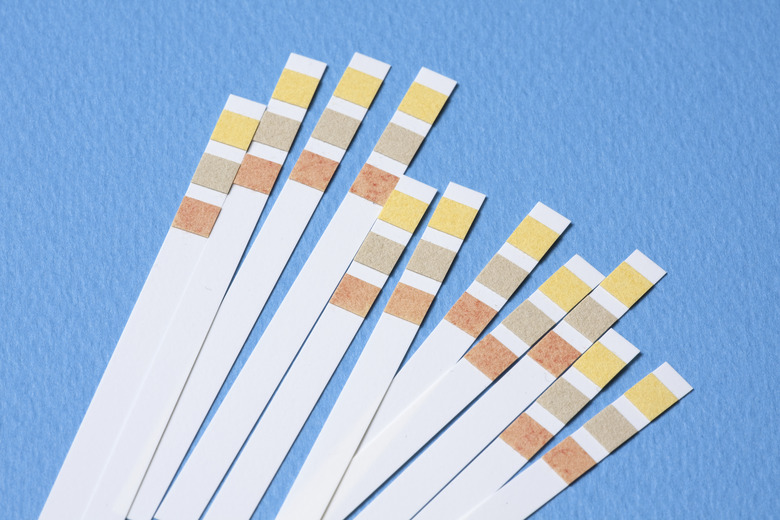What Do The Colors Indicate On A pH Test Strip Paper?
The colors on a pH strip measure the concentration of hydrogen ions in a solution or in soil. The color on the strip determines the acidic or alkalinity state of the item being tested. With pH test strips — each carefully treated with chemicals — you can learn about the solution's acid or base quality through color, depending on the type of pH paper being used.
TL;DR (Too Long; Didn't Read)
**The pH scale runs from 0 to 14, with each number assigned a different color.** At the bottom of the scale sits red, which represents the most acidic, and a dark blue at its opposite end represents 14 and alkalinity. In the middle zone, the pH scale becomes neutral. Milk has a pH of 6 and a neutral off-white color. Baking soda and seawater have a pH of 8 represented by a gray color. Lye, at the top of the alkalinity scale is deep blue and 14.
The pH scale runs from 0 to 14, with each number assigned a different color. At the bottom of the scale sits red, which represents the most acidic, and a dark blue at its opposite end represents 14 and alkalinity. In the middle zone, the pH scale becomes neutral. Milk has a pH of 6 and a neutral off-white color. Baking soda and seawater have a pH of 8 represented by a gray color. Lye, at the top of the alkalinity scale is deep blue and 14.
Universal Indicator Paper
Universal
Indicator Paper
Universal indicator, or alkacid, paper is very specific. It corresponds to the exact colors on the pH scale with a different color arranged in the order of colors found in the rainbow for every number on the pH scale. Danger red represents the color of acids on alkacid indicators. Less acidic solutions are orange or yellow while neutral solutions are gray to green. Basic or alkaline solutions are blues and purples. Your indicator strips should come with a color chart to match shades to pH values. Each brand of pH test strips may have slightly different color schemes, but most utilize the visible rainbow spectrum of light.
Litmus Paper
Litmus Paper
Litmus paper comes in two colors. Red litmus paper turns blue when exposed to a base. Blue litmus paper turns red in the presence of an acid. Litmus paper is of limited use since it only tells you whether you are dealing with an acid or base and gives no indication about strength.
Liquid Test Kits
Liquid Test Kits
Another form of pH testing involves taking a test sample of water in a test-tube type container. The directions for the liquid pH test generally require you to add a drop or two of the liquid into the water in the test tube. After shaking the tube, the liquid changes color, which you compare to a 0 to 14 pH chart to determine the acidity or alkalinity of the water. The human body requires water to be 7 on the pH scale for good health.
References
Cite This Article
MLA
Robbins, Carolyn. "What Do The Colors Indicate On A pH Test Strip Paper?" sciencing.com, https://www.sciencing.com/colors-indicate-ph-test-strip-paper-14066/. 30 April 2018.
APA
Robbins, Carolyn. (2018, April 30). What Do The Colors Indicate On A pH Test Strip Paper?. sciencing.com. Retrieved from https://www.sciencing.com/colors-indicate-ph-test-strip-paper-14066/
Chicago
Robbins, Carolyn. What Do The Colors Indicate On A pH Test Strip Paper? last modified March 24, 2022. https://www.sciencing.com/colors-indicate-ph-test-strip-paper-14066/
